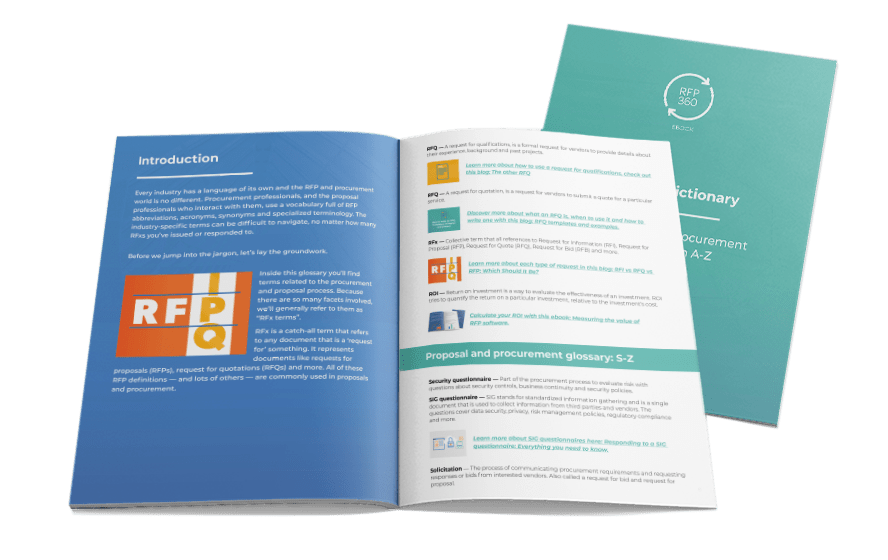A request for offer, often shortened to RFO, is a term used in procurement and sourcing. Like other RFX documents, an RFO is a questionnaire designed to exchange information between buyers and prospective vendors.
In this blog, we’ll explore everything you need to know about the request for offer. To start, we’ll cover the basics including definition and uses. Second, we’ll offer a step-by-step guide to the RFO process. Finally, we’ll share several real-life examples.
RFO basics
What is an RFO?
In procurement, RFO stands for request for offer. A request for offer is a document used by procurement teams to gather and compare information from vendors. Specifically, an RFO outlines the buyer’s needs by including a detailed scope or business requirements for the project. Then, the buyer invites vendors to create an offer to meet their needs.
Explore more procurement terminology in this RFX dictionary.

What is the difference between an RFO and an RFP, RFI or RFQ?
Unlike RFPs, RFIs and RFQs, the RFO is unique because it doesn’t solely rely on a standardized question and answer format. While there may be a handful of evaluation criteria or specific questions that must be addressed, the response format is often left up to the vendor.
This enables vendors to be more creative with their response. However, it also makes comparing, scoring and evaluating responses more difficult and subjective.
When to use an RFO
A request for offer is a good choice when you have a problem and you’re open to letting vendors pitch ideas of how to solve it. However it’s important to remember to provide some parameters for the solution.
It’s a good fit for buying professional services, one-time project purchases and low-risk projects with one primary decision maker rather than multiple stakeholders. In addition, while your responses should contain pricing, that shouldn’t be the primary consideration when using an RFO.
Guide to the request for offer process
The RFO process is similar to any other RFX. It can be broken down into three core steps: RFO creation, administration and evaluation.
1. Creation
Define your need
Before you start writing, it’s important to develop a clear understanding of what problem you’re trying to solve and what success would look like. Then, as you move forward through the process, you can refer back to this information to guide your efforts. You may need to interview a few stakeholders to understand the issue.
Establish your timeline
Ideally, your RFO will move quickly. However, it’s a good idea to plan your project and establish dates for key milestones. Similar to an RFP timeline, determine when you’ll send the RFO to vendors, how long they will have to send follow-up questions, when responses are due and what day you’ll share the results with vendors.
Write your RFO
Now it’s time to put it all together. Write your request for offer. Ideally, this should only take a few pages because you’re letting your vendors create a solution. Plan to include:
- Project background and goals
- Statement of work or scope
- Project timeline with offer due date
- Required vendor questions
- Vendor requirements and submission criteria
Note: Because of the broad nature of the RFO, consider requiring minimum qualifications for vendors, an estimate for the solution and a response page limit. Hopefully, this will help you avoid spending time reviewing vendor responses that aren’t a match, are too expensive or are dozens of pages long.
2. Administration
Send or publish your RFO
If you have a few vendors in mind, you can send your RFO to them directly. Remember, because evaluating responses can be complex, try to limit the number of vendors you include to less than six. On the other hand, if you’re part of a government agency, you may need to publish your RFO to enable any qualified vendor to respond. Whether you send your RFO to a few select vendors or open it to anyone, an RFP software solution makes it easier to gather and manage responses digitally.
Answer follow-up questions
Often, the most engaged and eager vendors will have follow up questions. While you want to encourage them to come up with a creative solution, it’s important to engage with them to help guide their efforts. Many procurement managers find it helpful to gather all vendor questions and provide the same answers to everyone participating. Indeed, this practice helps ensure a fair and transparent process.
3. Evaluation
Review the offers
Once the deadline for submission has passed, gather your offers and take a look. Review them first for compliance to your requirements. Next, go through each response and evaluate the proposed solutions. Score each offer using a vendor comparison matrix. Often, it’s a good idea to include any relevant stakeholders in the response review process.
Selection or next steps
Ideally, you have a clear front runner that meets your needs and falls within budget. If so, you can move forward and request a contract. Because this approach is collaborative, be prepared to engage in slightly more vendor negotiation than normal.
However, if you’re still not sure, you may want to dig into the top three responses in more detail. A request for proposal (RFP) is the perfect tool if you need to gather more data to ensure you select the right vendor.
RFO examples and template
When it comes to really understanding how to use an RFO, there’s nothing better than seeing it in action. Here are a few notable examples.
Information technology goods and services RFO example
This RFO example from California Courts, the judicial branch of the state of California, seeks a variety of IT services. The sections in the document include background information, description of services, project timeline, response requirements and criteria.
Cloud services RFO example
Published by the Texas Comptroller of Public Accounts, this RFO example includes lots of helpful information and attachments. Seeking cloud services, the request includes background, scope, requirements and details about the process to guide interested vendors.
RFO for assessment of ADA physical work requirements example
This RFO seeks a contractor to review the physical work requirements stated in 70 job descriptions. Issued by Prince William County Service Authority, the request for offer covers the project objective, scope of work and evaluation criteria.
RFO template example (Word)
The California Department of General Services (DGS) created this RFO template to help stakeholders navigate the procurement process. In addition to the template, they also share how to use it in this helpful guide.
The request for offer is a helpful tool for buyers and procurement teams. While not a fit for every project, it requires less time and effort than some other RFX documents. At the same time, the RFO enables collaboration with vendors to create unique and customized solutions.
To learn more about other types of RFX tools, check out these resources:
- RFI vs RFQ vs RFP: Which should it be?
- RFP meaning: A definitive guide to the request for proposal
- How to write an RFI: Templates and examples
- Request for quotation: RFQ | How-to, template and examples



